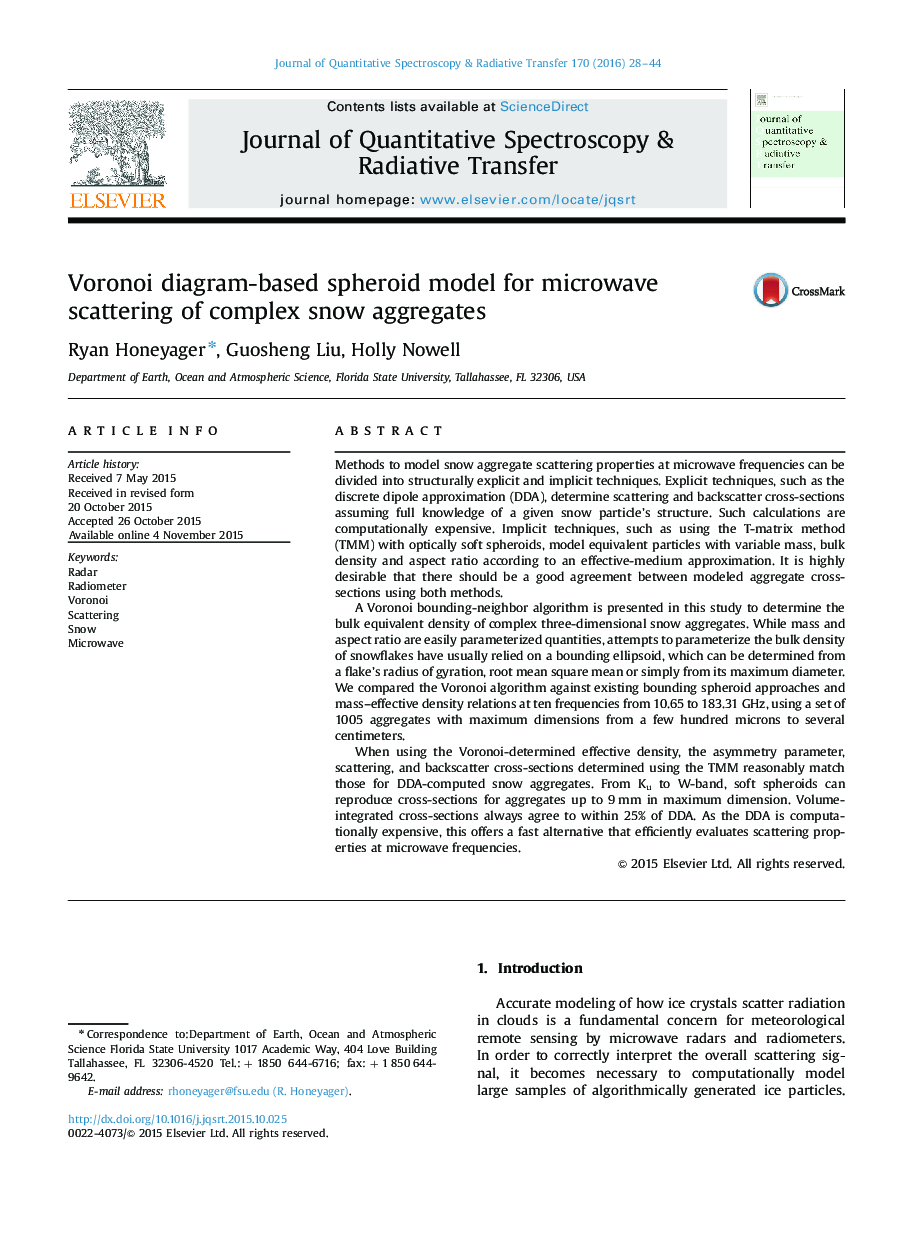| کد مقاله | کد نشریه | سال انتشار | مقاله انگلیسی | نسخه تمام متن |
|---|---|---|---|---|
| 5427696 | 1508645 | 2016 | 17 صفحه PDF | دانلود رایگان |

- We examined accuracy of soft-spheroid T-matrix approaches to DDA aggregates.
- Common mass-density formulations lead to underestimation of backscatter.
- Existing methods to determine reference volume are non-physical.
- We created a Voronoi volume fraction method to match aggregate interior density.
Methods to model snow aggregate scattering properties at microwave frequencies can be divided into structurally explicit and implicit techniques. Explicit techniques, such as the discrete dipole approximation (DDA), determine scattering and backscatter cross-sections assuming full knowledge of a given snow particle's structure. Such calculations are computationally expensive. Implicit techniques, such as using the T-matrix method (TMM) with optically soft spheroids, model equivalent particles with variable mass, bulk density and aspect ratio according to an effective-medium approximation. It is highly desirable that there should be a good agreement between modeled aggregate cross-sections using both methods.A Voronoi bounding-neighbor algorithm is presented in this study to determine the bulk equivalent density of complex three-dimensional snow aggregates. While mass and aspect ratio are easily parameterized quantities, attempts to parameterize the bulk density of snowflakes have usually relied on a bounding ellipsoid, which can be determined from a flake's radius of gyration, root mean square mean or simply from its maximum diameter. We compared the Voronoi algorithm against existing bounding spheroid approaches and mass-effective density relations at ten frequencies from 10.65 to 183.31Â GHz, using a set of 1005 aggregates with maximum dimensions from a few hundred microns to several centimeters.When using the Voronoi-determined effective density, the asymmetry parameter, scattering, and backscatter cross-sections determined using the TMM reasonably match those for DDA-computed snow aggregates. From Ku to W-band, soft spheroids can reproduce cross-sections for aggregates up to 9Â mm in maximum dimension. Volume-integrated cross-sections always agree to within 25% of DDA. As the DDA is computationally expensive, this offers a fast alternative that efficiently evaluates scattering properties at microwave frequencies.
Journal: Journal of Quantitative Spectroscopy and Radiative Transfer - Volume 170, February 2016, Pages 28-44